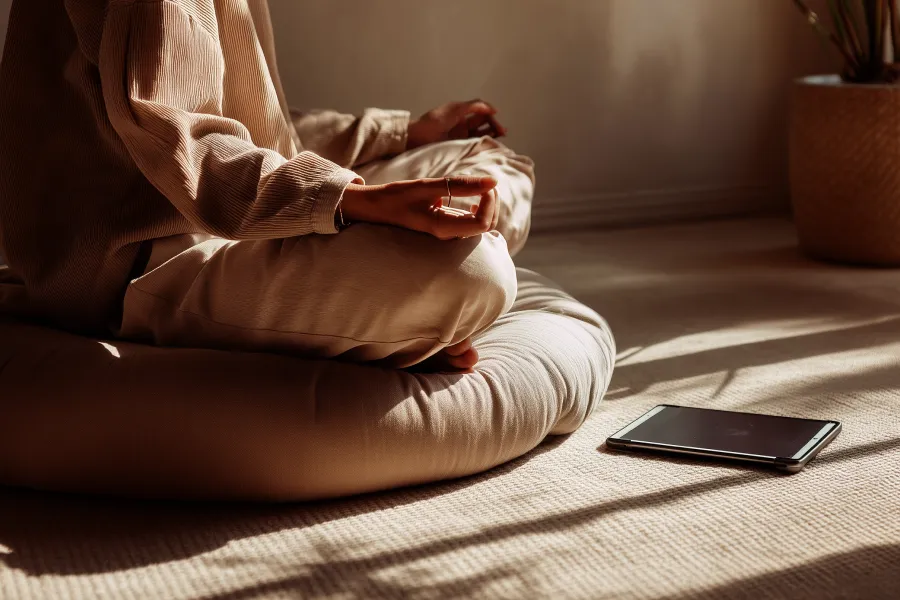
Modern life feels like a constant rush. Notifications buzz, deadlines loom, and stress becomes an unwelcome companion. Yet, even in this fast-paced environment, it’s possible to cultivate peace through calming practices and habits that steady the mind and restore balance. These aren’t abstract ideas but actionable steps that anyone can integrate into their routine for better emotional health.
Alongside timeless methods, resources like Simple Habits & Soothing Tools to Quiet the Mind provide structured guidance and tools for building sustainable calm. This digital guide focuses on proven techniques to ease anxiety and foster peaceful living.

The first step to managing stress is creating small but consistent rituals. Calming practices and habits act as anchors in daily life. They remind you to slow down, breathe, and return to what truly matters. Simple changes—like a morning gratitude practice or a nightly reflection—can dramatically reduce tension.
When you incorporate these routines, you create structure around self-care. Combined with resources such as Simple Habits & Soothing Tools to Quiet the Mind, the path toward mental clarity becomes clear and achievable.
Stress thrives when we forget to pause. Building daily relaxation techniques into your schedule can shift the entire tone of your day. For example, a five-minute breathing practice in the morning helps you begin with clarity. Short stretching sessions at midday relieve muscle tension and mental fatigue.
Breathing has been shown to center the nervous system. You can explore more about this through stress relief breathing practices, which highlight simple, powerful ways to use the breath as a tool.
The way we move through life matters. By embracing mindful lifestyle routines, you cultivate awareness in ordinary tasks. Eating meals slowly, noticing flavors and textures, or walking without distractions helps retrain the mind.
This shift in perspective doesn’t require large amounts of time. Instead, it invites attention back to the present. Pairing mindful moments with tools like journaling or soothing prompts, as offered in Simple Habits & Soothing Tools to Quiet the Mind, deepens the practice.
We often look for grand solutions to stress. The truth is, small consistent steps work best. Proven stress reduction methods include:
Each of these actions reclaims control over mental well-being. For further sleep-specific strategies, consider reading about natural ways to sleep better. By protecting rest, you restore both mind and body.
How you start and end the day frames everything in between. Morning routines with calming practices and habits—like mindful stretching or a brief meditation—help you step into the day with clarity. Evening rituals, such as writing down three positive experiences, allow the nervous system to relax.
These practices encourage the brain to transition from stress toward calm. When done regularly, they train resilience and prevent burnout.

Everyone experiences moments of overwhelm. Instead of ignoring those feelings, focus on healthy coping strategies. Options include journaling to express emotions, practicing yoga for body awareness, or talking to a trusted friend.
These approaches work because they empower, rather than suppress. By facing stress with constructive actions, you build long-term emotional strength. Guides like Simple Habits & Soothing Tools to Quiet the Mind provide accessible frameworks for choosing the best coping methods.
Poor sleep magnifies anxiety. Creating bedtime calming practices and habits can transform nights from restless to restorative. Simple techniques such as dimming lights, sipping herbal tea, or practicing gentle stretches prepare the body for rest.
These methods align with broader wellness rituals for peace that extend beyond sleep, ensuring the entire day flows with steadiness and balance. Pairing them with breathing routines from stress relief breathing methods provides deeper relaxation.
Sustainable wellness is built on consistency. Establishing wellness rituals for peace ensures calm becomes part of your identity, not just an occasional escape. Morning affirmations, evening gratitude lists, and weekly digital detoxes strengthen resilience against stress.
These rituals don’t need to be complex. The key is dedication. By practicing them regularly, you rewire your nervous system to respond differently to stress triggers. Over time, peace becomes your default.
Structure brings comfort in uncertain times. That’s why frameworks like Simple Habits & Soothing Tools to Quiet the Mind are effective—they provide a clear roadmap. With organized exercises and guided prompts, you don’t wonder where to begin. Instead, you move step by step toward calm.
This structure matters most when life feels chaotic. It offers tools to manage anxiety in a way that feels practical and supportive.

The beauty of calming habits lies in their simplicity. A few mindful breaths, a gentle stretch, or a reflective journal entry can redirect your day. Over weeks, these small shifts add up, creating profound long-term change.
Peace isn’t about erasing stress entirely. It’s about learning to respond differently. When you adopt calming practices and habits, you give yourself permission to slow down, breathe, and live fully in the present moment.
Leave a comment